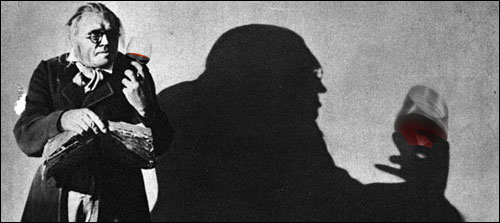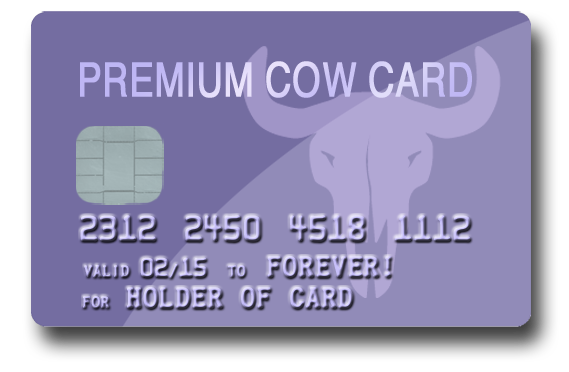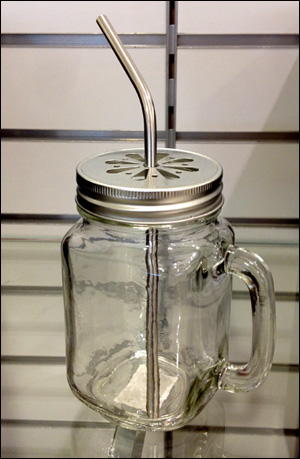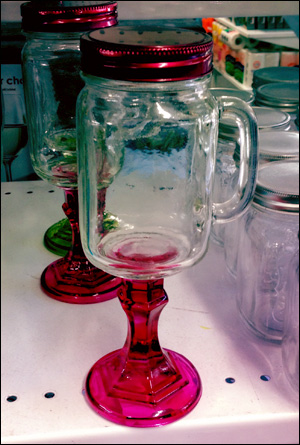Mon 2 Mar 2015
Oh My Goodness, the Chips!
Posted by anaglyph under Gadgets, Hokum, ShooTag, Silly, Skeptical Thinking, SmashItWithAHammer, WooWoo
[12] Comments
So anyway, the other day I just happened to think that it had been far too long a time since I visited our old friends at ShooTag, so I took a little stroll over to their site. Yeah, pretty much same ol’ same ol’. The name (and by implication, the endorsement) of Texas State University has mysteriously reappeared on their front page again, after they were explicitly directed to take it off by said university (on account of… well, no delicate way to put this: they were lying about Texus U’s involvement in the supposed scientific tests of their product), but it hardly surprises me. That’s what dishonest people do. The site itself is looking spectacularly crappy – dead links, crummy nav, appalling layout. And it looks like it’s been comprehensively shat upon by the Bad Advertising Bird. Evidently not much effort or money going into that particular enterprise these days.
I did notice that they are sporting some ‘Camouflage’ style ShooTags now, ostensibly for dogs and people who are bothered by mosquitoes when hunting.
“NEW: STAY INVISIBLE WHEN HUNTING WITH THESE NEW CAMO TAGS!” they scream in caps, and given the outrageousness of previous ShooTag claims, one might be forgiven for thinking they’re now offering some kind of Harry Potteresque invisibility mechanism for their gadgets. But I suppose we should give them the benefit of the doubt and take it that they mean ‘invisible to mosquitoes’. I’m a charitable kind of person when it comes to metaphor.
The thing that caught my attention, though, was a small, nondescript link that appears twice on the home page:

3000 years of science! OK, so that’s gonna be good. Clicking the link takes us to a very different experience indeed. CieAura®’s site is way more moneyed-up than ShooTag’s sorry presence. Images of good-looking happy smiling people by the seaside tell me that:
“CieAura has introduced a series of holographic chips that communicate with the body to help promote proper balance in several areas of interest to all human beings: deeper rest, energy, allergies, libido, relief from discomfort and weight management.”
Cool. Holographic chips that communicate with the body! Like Star Trek! Or something. Well, you can’t just make something like that up, right? You’d need some science. Hey, they have a video! Let’s have a look at that to see if there’s any enlightenment to be had. I’ll wait while you do that. You only need to watch the first forty or fifty seconds. I promise that anyone who’s been a Cow reader for a while is going to get a really big surprise around the 31 second mark. Trust me, it’s worth it.
A personage called Paul Rogers (hmm… familiar sounding surname…) tells us that CieAura has ‘introduced a line of holographic chips to the world’. Well, he’s certainly peddling a line, that’s for sure. These miraculous chips have been developed for CieAura by their chief scientist – it’s about here that I choked on my Manhattan – Melissa Rogers. Oh, how many pennies just dropped then? Paul Rogers, the link from ShooTag and the suspicious lack of product activity from them over the last few years…
Let’s have a little recap of the scientific credentials of Melissa Rogers, Chief Scientist of CieAura®, who has been designing these chips for the last sixteen years (moonlighting from her deep thought on ShooTag, one supposes):
Ms Rogers first tangled with the Cow back in 2009, where she called me ‘ignorant’ for not being ‘disaplined [sic] in physics and quantum physics’ and attempted – but failed comprehensively – to impress me with her scientific knowledge of radio frequencies, fractals and crystals (some things I actually do happen to know quite a lot about). At around that time she left a comment on another blog in reference to ‘Einstein’s famous equation, E=M¾’, completely duffing probably the most well-known physics formula in the world, and one that even third graders get right. Over the next months, she went on to assert that mobile phones use radio frequencies (they don’t), that she understands the work of physicist Geoffrey West at the Santa Fe Institute (she doesn’t) and that she knows how to properly conduct a science experiment (not a clue).
Ms Rogers also has clear links to Professor William Nelson (aka Desiré Dubounet) who, in the late 1980s was indicted by the FDA on numerous charges of fraud, all related to medical ‘energy’ devices. Rather than face these charges Nelson illegally left the US in 1996 to hide in Hungary, where he/she currently resides, and still manufactures and sells his machines. I can’t say if Mr and Ms Rogers have any current affiliations with Nelson/Dubounet, but Melissa Rogers certainly did in 2009 – well within her supposed sixteen years’ development period for CieAura – when she spoke at Nelson’s annual QX Conference (a ‘medical energy’ seminar) in Budapest.
We can also find a bio for Melissa Rogers on the site:
Melissa uses small signal technology ((Ms Rogers has quite obviously picked up the ‘small signal technology’ buzzwords from her association with Rainer Fink who she implicates in the ShooTag experiments.)) and uniquely combines it with advanced science to develop products that help balance the body’s intrinsic energies. After successfully launching over 12 products into the retail mass market, she joined the CieAura team in July of 2012. Some of her products have won prestigious awards and have been University tested with high efficacy evaluations. Her products are designed to assist the body in balancing the energy in the body, thus helping reduce stress in the body. Melissa believes; reducing stress in the body will help reduce stress in everyday life.
“Some of her products have won prestigious awards and have been University tested with high efficacy evaluations.”
I’d love to know what those products are – ShooTag is quite obviously not one of them, since it’s never been university tested. There’s no mention of what Ms Rogers’ ‘prestigious awards’ actually were, which is kind of peculiar. Most people are very eager to show you their Oscar. I’m also quite curious about the extent of Ms Rogers’ ‘advanced science’, as she’s not demonstrated it anywhere that I’ve ever seen.
That CieAura has appointed this person as their ‘Chief Science Officer’ ((The implication it carries – that there are a bunch of other ‘science officers’ – is frightening, given the qualifications of their chief.)) speaks volumes about the kind of product that they’re selling, and we’ll examine that product in the next post.
I just know you’ll stay tuned.












